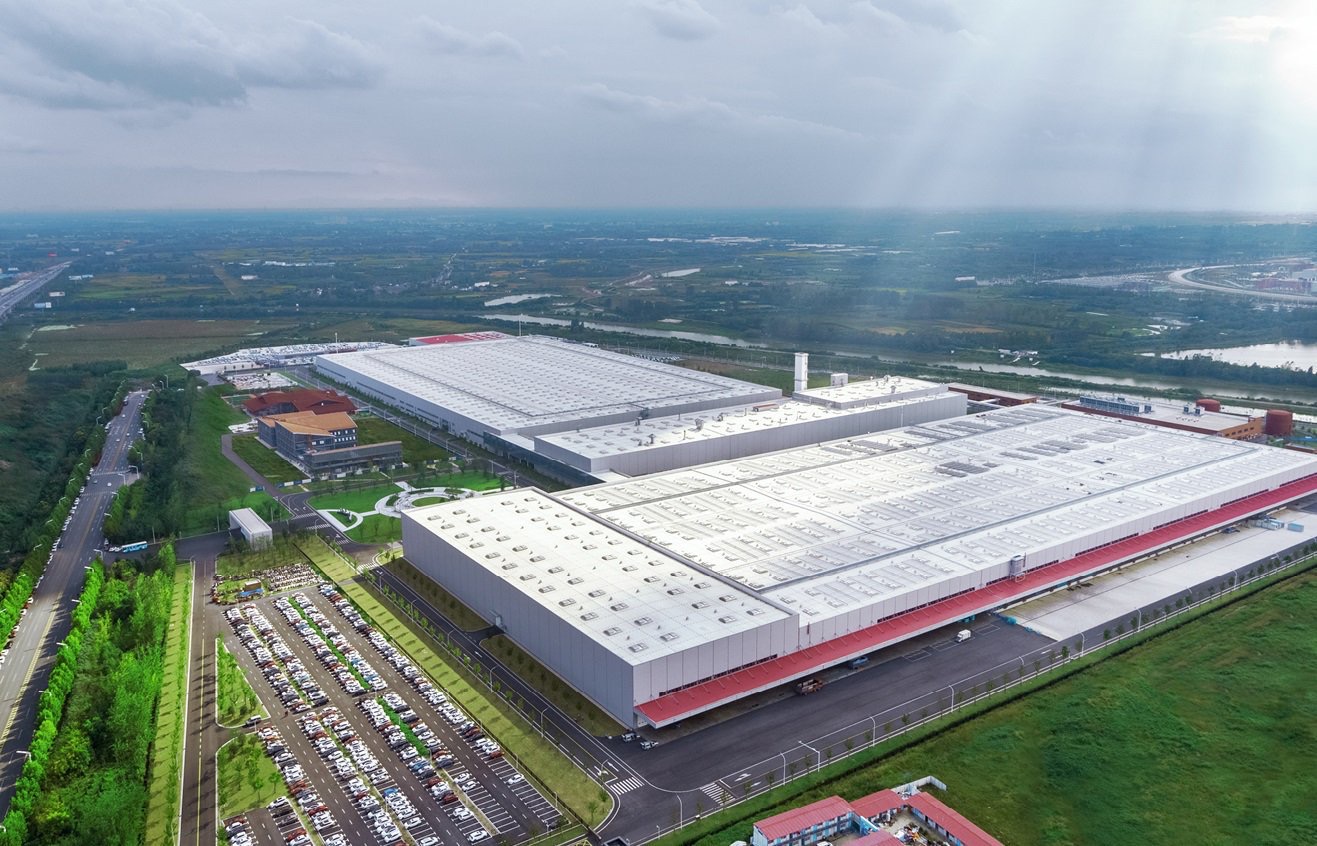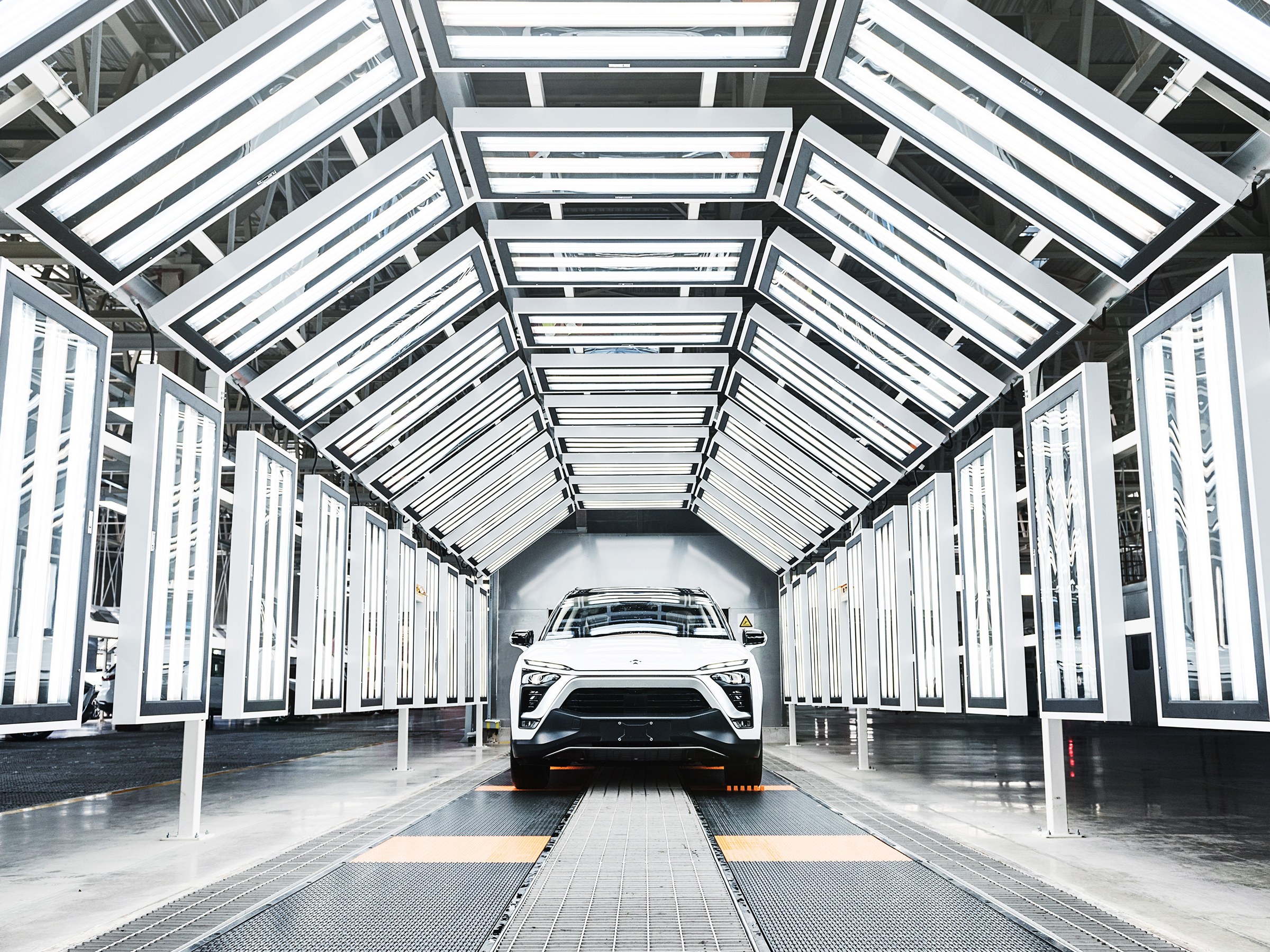News
The EV revolution is finally in full swing around the globe

This is a free excerpt of our weekly member-only newsletter. Each week, we give you our take on the biggest stories of the week, our favorite photos & videos and much more. Become a member today receive all of Teslarati’s newsletters.
I may have said this before, but the electric revolution is really starting to take shape. But, looking back on the developments over the last few years, “starting to take shape” doesn’t really categorize the massive organizational shifts, intense capital commitments, and technological breakthroughs. I’d now like to claim that the electric revolution has caught its stride and is finally in full swing.
Across the world, from Nevada to Shanghai, Singapore, Croatia, and Sweden, the electric revolution is getting the worlds best minds and intense interest from all parties. In Nevada, Tesla has built the worlds largest battery factory producing 35GWh of lithium-ion batteries. The company is investing so heavily into EVs that investors are constantly concerned about their cash balance. Regardless of investors’ concerns, Tesla is flying forward with another manufacturing plant in Shanghai, China.
At the same time, in another part of eastern China, Chinese startup NIO (Weilai in Chinese) is building hundreds of electric SUVs every day. The company, like Tesla, continues to plow capital into infrastructure (battery swap stations, stores, service centers, and supercharging stations). The company has delivered 15,000+ vehicles since starting production in June last year.

Just south of China, in Singapore, world-famous vacuum engineer and soon-to-be electric vehicle manufacturer, Sir James Dyson is investing hundreds of millions of dollars into next-generation vehicles. While its too soon to know whether his venture will be successful, Dyson is betting big with 400+ employees and $3.3B allocated to the project.
Another EV startup getting some serious traction is hypercar maker, Rimac. The company now employs over 450 people and has partnered with world-famous design firm Pininfarina and accepted investment from Porsche. Rimac’s latest vehicle has a top speed of 285 mph (460km/h) and goes 0-60 in a mind-numbing 1.85 seconds.
In Sweden, former Tesla supply chain experts Peter Carlsson and Paolo Cerruti are working to build a gigafactory to meet the needs of European automakers. The company employs over 200 people and has begun construction of their large R&D facilities.
Clearly, there is a lot of interest in electric vehicles and how to bring them to market quickly. While these projects mentioned above may be some of the more exciting projects, I haven’t even mentioned the traditional automotive leaders’ plans. VW is earmarking $91B to spend on EV development, GM is looking to launch 10 new EVs between 2021-2023, and the Indonesian government is luring Renault and Volvo to build EV factories to meet EV production goals.
With the EV revolution in full swing, the team here at Teslarati is busy working to cover the biggest stories around the world. Just a few weeks ago, Simon was in Germany to explore Porsche’s upcoming EV production plans. Next week, I’ll be in Shanghai to check out NIO’s strategy and their state-of-the-art factory. At the same time, Dacia will be traveling to Arizona, to see Nikola Motor Company’s newest electric semi-trucks, and then off to New York to see Rivian’s latest products at the New York Auto Show!
Disclaimer: This column does not necessarily reflect the opinion of Teslarati and its owners. Christian Prenzler does not have a position in Tesla Inc. or any of its competitors and does not have plans to do so in the next 30 days.

Elon Musk
Elon Musk’s X will start using a Tesla-like software update strategy
The initiative seems designed to accelerate updates to the social media platform, while maintaining maximum transparency.

Elon Musk’s social media platform X will adopt a Tesla-esque approach to software updates for its algorithm.
The initiative seems designed to accelerate updates to the social media platform, while maintaining maximum transparency.
X’s updates to its updates
As per Musk in a post on X, the social media company will be making a new algorithm to determine what organic and advertising posts are recommended to users. These updates would then be repeated every four weeks.
“We will make the new 𝕏 algorithm, including all code used to determine what organic and advertising posts are recommended to users, open source in 7 days. This will be repeated every 4 weeks, with comprehensive developer notes, to help you understand what changed,” Musk wrote in his post.
The initiative somewhat mirrors Tesla’s over-the-air update model, where vehicle software is regularly refined and pushed to users with detailed release notes. This should allow users to better understand the details of X’s every update and foster a healthy feedback loop for the social media platform.
xAI and X
X, formerly Twitter, has been acquired by Elon Musk’s artificial intelligence startup, xAI last year. Since then, xAI has seen a rapid rise in valuation. Following the company’s the company’s upsized $20 billion Series E funding round, estimates now suggest that xAI is worth tens about $230 to $235 billion. That’s several times larger than Tesla when Elon Musk received his controversial 2018 CEO Performance Award.
As per xAI, the Series E funding round attracted a diverse group of investors, including Valor Equity Partners, Stepstone Group, Fidelity Management & Research Company, Qatar Investment Authority, MGX, and Baron Capital Group, among others. Strategic partners NVIDIA and Cisco Investments also continued support for building the world’s largest GPU clusters.
News
Tesla FSD Supervised wins MotorTrend’s Best Driver Assistance Award
The decision marks a notable reversal for the publication from prior years, with judges citing major real-world improvements that pushed Tesla’s latest FSD software ahead of every competing ADAS system.

Tesla’s Full Self-Driving (Supervised) system has been named the best driver-assistance technology on the market, earning top honors at the 2026 MotorTrend Best Tech Awards.
The decision marks a notable reversal for the publication from prior years, with judges citing major real-world improvements that pushed Tesla’s latest FSD software ahead of every competing ADAS system. And it wasn’t even close.
MotorTrend reverses course
MotorTrend awarded Tesla FSD (Supervised) its 2026 Best Tech Driver Assistance title after extensive testing of the latest v14 software. The publication acknowledged that it had previously criticized earlier versions of FSD for erratic behavior and near-miss incidents, ultimately favoring rivals such as GM’s Super Cruise in earlier evaluations.
According to MotorTrend, the newest iteration of FSD resolved many of those shortcomings. Testers said v14 showed far smoother behavior in complex urban scenarios, including unprotected left turns, traffic circles, emergency vehicles, and dense city streets. While the system still requires constant driver supervision, judges concluded that no other advanced driver-assistance system currently matches its breadth of capability.
Unlike rival systems that rely on combinations of cameras, radar, lidar, and mapped highways, Tesla’s FSD operates using a camera-only approach and is capable of driving on city streets, rural roads, and freeways. MotorTrend stated that pure utility, the ability to handle nearly all road types, ultimately separated FSD from competitors like Ford BlueCruise, GM Super Cruise, and BMW’s Highway Assistant.
High cost and high capability
MotorTrend also addressed FSD’s pricing, which remains significantly higher than rival systems. Tesla currently charges $8,000 for a one-time purchase or $99 per month for a subscription, compared with far lower upfront and subscription costs from other automakers. The publication noted that the premium is justified given FSD’s unmatched scope and continuous software evolution.
Safety remained a central focus of the evaluation. While testers reported collision-free operation over thousands of miles, they noted ongoing concerns around FSD’s configurable driving modes, including options that allow aggressive driving and speeds beyond posted limits. MotorTrend emphasized that, like all Level 2 systems, FSD still depends on a fully attentive human driver at all times.
Despite those caveats, the publication concluded that Tesla’s rapid software progress fundamentally reshaped the competitive landscape. For drivers seeking the most capable hands-on driver-assistance system available today, MotorTrend concluded Tesla FSD (Supervised) now stands alone at the top.
News
Elon Musk’s Grokipedia surges to 5.6M articles, almost 79% of English Wikipedia
The explosive growth marks a major milestone for the AI-powered online encyclopedia, which was launched by Elon Musk’s xAI just months ago.

Elon Musk’s Grokipedia has grown to an impressive 5,615,201 articles as of today, closing in on 79% of the English Wikipedia’s current total of 7,119,376 articles.
The explosive growth marks a major milestone for the AI-powered online encyclopedia, which was launched by Elon Musk’s xAI just months ago. Needless to say, it would only be a matter of time before Grokipedia exceeds English Wikipedia in sheer volume.
Grokipedia’s rapid growth
xAI’s vision for Grokipedia emphasizes neutrality, while Grok’s reasoning capabilities allow for fast drafting and fact-checking. When Elon Musk announced the initiative in late September 2025, he noted that Grokipedia would be an improvement to Wikipedia because it would be designed to avoid bias.
At the time, Musk noted that Grokipedia “is a necessary step towards the xAI goal of understanding the Universe.”
Grokipedia was launched in late October, and while xAI was careful to list it only as Version 0.1 at the time, the online encyclopedia immediately earned praise. Wikipedia co-founder Larry Sanger highlighted the project’s innovative approach, noting how it leverages AI to fill knowledge gaps and enable rapid updates. Netizens also observed how Grokipedia tends to present articles in a more objective manner compared to Wikipedia, which is edited by humans.
Elon Musk’s ambitious plans
With 5,615,201 total articles, Grokipedia has now grown to almost 79% of English Wikipedia’s article base. This is incredibly quick, though Grokipedia remains text-only for now. xAI, for its part, has now updated the online encyclopedia’s iteration to v0.2.
Elon Musk has shared bold ideas for Grokipedia, including sending a record of the entire knowledge base to space as part of xAI’s mission to preserve and expand human understanding. At some point, Musk stated that Grokipedia will be renamed to Encyclopedia Galactica, and it will be sent to the cosmos.
“When Grokipedia is good enough (long way to go), we will change the name to Encyclopedia Galactica. It will be an open source distillation of all knowledge, including audio, images and video. Join xAI to help build the sci-fi version of the Library of Alexandria!” Musk wrote, adding in a later post that “Copies will be etched in stone and sent to the Moon, Mars and beyond. This time, it will not be lost.”








